|
|
|
|
|
|
|
|
Information on this website:
Tai chi helps reduce stress and anxiety. And it also helps increase flexibility and balance. Tai Chi is very beneficial for health benefits.
A United States taiji scholars says: If you ask American kids what their favorite American food is, many will reply, "Pizza!"And someday, when asked what their favorite American pastime is, Americans will say, "Tai Chi!"
Li Shufang
(Tai Chi Master)
Member of Chinese Wushu Association
A member of Beijing Wushu Association Yang Style Taijiquan research board
Yang Tai Chi sixth generation, the fourth generation descendant of Yang Chengfu Tai Chi.
--------------------------------------------
Tel: 0086-18750258761 (Xiamen)
E-mail: 1537598225@qq.com
Website: QQ: 1649839131
-------------------------------------------------
Teaching content: Young's authentic Tai Chi, Tai Chi sword, Tai Chi sword, Tai Chi Fan, Tai Chi, Tai Chi, Tai Chi Chuan, pushing hands and young old.
Teaching place: Xiamen Beijing (Si Ming)
網 站 太 極 信 息 交 流 空 間 收 藏
Information exchange between the stations and the network
楊式太極拳發源地-河北邯鄲永年 TV video 電視臺視頻
Photo with the Taiji masters 太極名家 傳統楊氏太極拳29式演示
Yang Chengfu taijiquan photos太極拳照 My picture data 我的圖片
Can this ancient exercise lets you have less doctor visit and makes you feel 10 years younger
Getting tired of frequent doctor visit without any significant health improvement? Feeling tired easily without much energy for your work? Read on to find out how you can easily harness the energy of an ancient exercise for amazing health benefits.
Tai Chi is the future of health sport: 太极是最有未来的健康运动
Tai Chi's slow, relaxed movements incorporate breathing and relaxation techniques that cleanse our mind, body, and emotions each time we go through the gentle movements.
太極的緩慢,放鬆動作結合呼吸和放鬆技術,淨化我們的心靈,身體和情感每次我們通過動作輕柔去。
There is no exercise on earth that can help you go through this wild ride toward the future quite like T'ai Chi can—which is why Tai Chi is truly the exercise of the future.
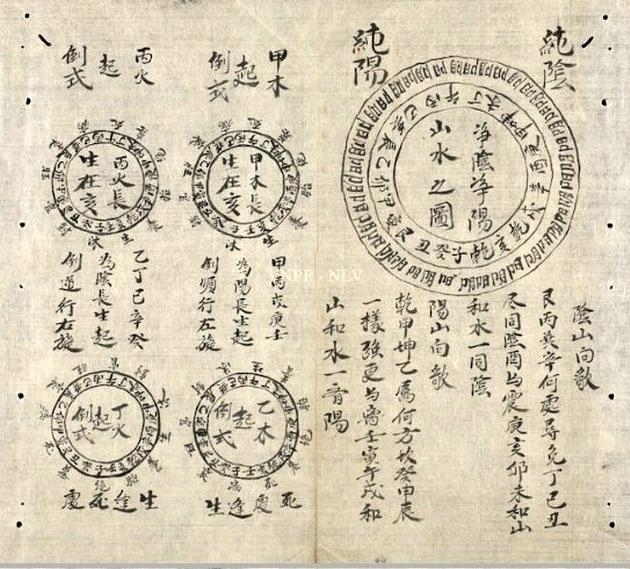
Taiji harmony health world:太極和諧了健康的世界
太极拳(太极拳)是中国武术。 Tai Chi Chuan (taijiquan) is a Chinese martial art. 这是“内部”的武术之一,随着形意拳和八卦掌。 It is one of the “internal” martial arts, along with Xingyiquan and Baguazhang. 太极拳练习方法是:放松(歌曲)成柔软的,统一的柔软性变得硬,刚柔相济支持对方。 Tai Chi Chuan practice method is: to relax (song) into softness, unified softness becomes hardness, hardness and softness support each other. 太极拳强调如何面对一个敌人:“他不动,我不动,他开始移动,我已经感动,我起步晚,并控制第一”。 Tai Chi Chuan emphasizes how to confront an enemy: “He does not move, I do not move; he starts to move, I have already moved; I start late and control first”. 太极拳是坚持,坚持,连接和下面的,不分离,而不是抵制;弯曲变直再次,放松和伸展;内部和外部一致;用寂静来控制它们的运动;使用柔软性来控制硬度。 Tai Chi Chuan is sticking and adhering, connecting and following; not separating and not resisting; bend to become straight again; relaxed and extended; internally and externally consistent; use stillness to control their movement; use softness to control hardness. 沃德客,回滚,按,推,拉,劈,肘,肩,中风是八个基本的“能量”。 Ward-off, rollback, press, push, pull, split, elbow, shoulder-stroke are the eight basic “energies”. 前进,后退,左看,右看,并保持居中有五个“步骤”,基本步法。 Forward, back, look left, look right, and keep centered are the five “steps”, the basic footwork. 合并,它们也被称为十三姿势。 Combined, they are also known as the Thirteen Postures.
太极拳练习,包括手形,推手,剑和刀形式。 Tai Chi Chuan practice includes Hand Form, Push Hands, Sword and Saber Forms.

Yang style taijiquan history and legend
Yang style taijiquan -- Originated in ancient city of yongnian, Handan city, Hebei province Guangfu, Guangfu instruct people in the qingdaoguang years calendar and the five dynasties by Yang Lu-ch'an, near so far 170 Years of history. Yang style taijiquan and profound mysteries of the infinite is one of the essence of Chinese traditional culture, by the people of the world's favorite. In the folk legend of Yang style Tai Chi has many, such as a steal fist of Yang Lu-ch'an, and Yang Lu Chan Chong in the boxing world, strike out Hou, Jian Hou Cheng Fu world view. (Zhang Guosheng taiji scholars)
One exercise you can safely do everyday even at 80 years old
Actually, Tai Chi is more than exercise.
It's about movements to circulate your body invisible energy called "chi". Smooth circulation of "chi" energy ensures a healthy body. Stagnant and blocked "chi" energy causes all sorts of chronic disease.
If practiced correctly and sufficiently, you can use this ancient exercise as an effective alternative healing for today's health problems. With Tai Chi, you can naturally...
-
Improve your chronic disease slowly but steadily
-
Feel more energetic to do things you love
-
Strengthen your immune system to shield yourself against sicknesses
-
保持你的青春 Maintain your youthfulness
-
减轻你的压力,放松自己的心灵 Relieve your stress and calm your mind
So, are you ready to tap into the power of this ancient exercise and experience the energy of Tai Chi?
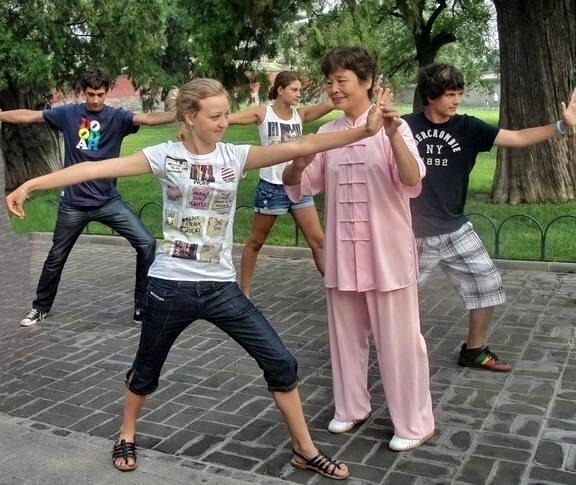
Yang style Tai Chi Chuan training anecdote
In the turbulent era of Qing China, Yang Lu Chan was initially given the nobility of his students ' physical fitness, Chen style of boxing fight difficult actions change becomes a relatively simple, soft and easy to practice, postures stretch the generous, the speed is slow, rigid and contains, light and sinking and so on. Practicing a long time only to find students that some bingbingyangyang people actually practicing physical fitness had been significantly improved, some even eradication of disease for years. When he discovered that Yang taijiquan also has health and health-keeping function. Since Yang style Tai Chi Chuan himself has a healthy body and attack taking into account the unique style.
Into the early years of the Republic of China, Yuan Shikai Dang political period studied Yang style taijiquan is common, some just the social meeting celebrities and Government Minister.
To watch boxing then chenjiagou, still only stay inside the Chan Clan heritage. So the children Wushu in the poems by Yang Jizi, writes "However, Yubei Chen family fist, Yang Jia in southern Hebei province" sentence.
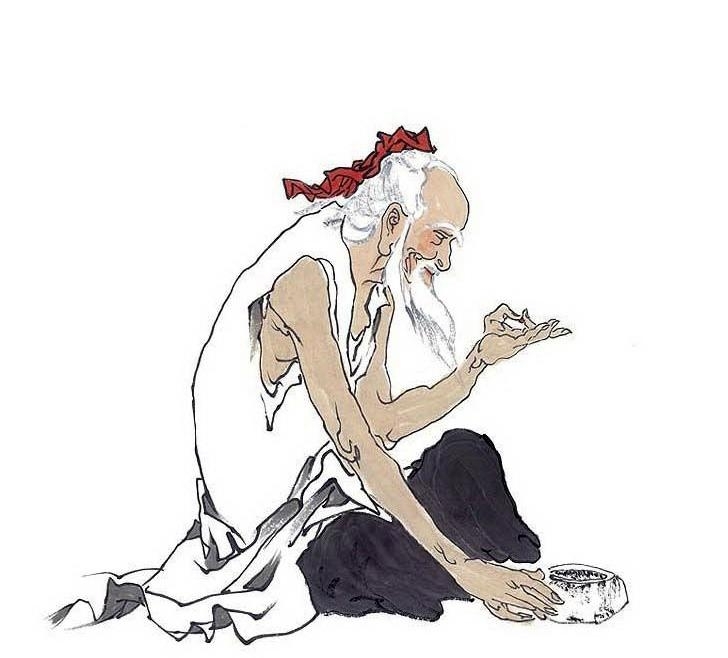
Authentic Tai Tai Chi five big characteristics:
1
martial art meaning hidden show deep, offensive and defensive, avoid leaning to either side; 2 healthy healing effect is obvious, has been nearly200 years practice proves; 3 beautiful posture, stretch generous, ages; 4 authentic Young's family stereotypes frame; 5 as the official leaders regarded boxing. Since Yang Qing Dynasty palace Luchan into boxing was granted to the Republic of China, Jiang Zhongzheng Yang Chengfu wrote" physical exercise", and later Yang Zhenji as the Central Committee of Communist Party of China north Bureau senior cadre to teach Tai chi.
Tai Chi secrets
Tai Chi was very, very good strike against gongfu and fitness activities extremely subtle, powerful. What practice of taijiquan, as long as the master is truly understand Tai Chi. According to requirements of taiji to teach, disciples as long as required by the master to have access to a certain degree of Kung Fu, but many people like to progress fast tricks. Someone asked is there a trick, I think may be a bit, but not too big, the key is the effort to train, I say a little bit, is that Tai Chi is practicing hard out of boxing and a fist. Some savvy, disciple of Yang Chengfu Li Yaxuan said "the best practice method of taijiquan, is to train the mind, practicing, practicing, practicing emptiness. Not closely marked practiced
觔
skeletal muscle. "Li Yaxuan practise shadow boxing when memories of the master Yang Chengfu practise shadow boxing.
太极拳诀
拳似流星眼似电,腰如蛇形脚如钻;
闾尾中正神贯顶,刚柔圆活上下连;
体松内固神内敛,满身轻俐顶头悬;
阴阳虚实急变化,命意源泉在腰间。
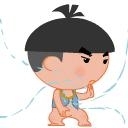
Top ten benefits of Tai Chi exercise:
A physical difference, deficiency of the spleen and stomach, colorectal disease, constipation Jiuzhi do not heal, generally in March or May be thoroughly improved.
B hypertension, lipid relaxing bowels, liver, hyperlipemia, gastric diseases, chronic gynecological diseases, chronic dizziness headache a year receive well
Effect.
Three Hyperostosis, arthritis, rheumatism in General two or three years will have good results.
Four improved sleep quality, sleep more dreams, rest well, half a year back to normal.
Five kidney, fluid, and Yang (yin).
Six exercises in the nervous system, enhance neurological function, prevent Alzheimer 's.
In the adjustment and improvement of seven secrets, beauty, improve the temperament, body shape, so that more young people, enhance human mental qualities.
Eight Tai Chi is an investment in their future health activities, to proactively control, anti-aging, and longevity.
Keep the brain awake to improve prevention and treatment of cervical spondylosis memory Edward Zeng toughness the body through the meridians of qi and blood to remove excess moisture and fat the body immunity.
Ten actions to slow in Tai Chi practice, practical applications is fast as lightning.
Defensive body, an enemy.
In addition, Tai Chi fit for people of all ages, both men and women are fit, taijiquan must find master pointing and regular Tai Chi teachers to teach, or practicing crooked is not changed.
The Taijiquan upper limb movement password: Shoulders dropped and elbows, tai chi on the basic requirements of the state of motion of the upper limb to do this, its essence lies the taijiquan and outreach of the scapula That long as scapula subsidence outreach, naturally it must be "Chen Jian fall elbow. "Mention the basic movement of the scapula on sinking within shrink, the outreaching four so-called force to go back, actually refers to the waist and legs of the big muscle force, the force along the spine upload to the scapula the Ministry, through the scapula support conduction (scapula in the sinking of the state of outreach), passed to the arm, hand. Requirements prior to the development effort arm comes first, the so-called little section from root ganglion reminders.
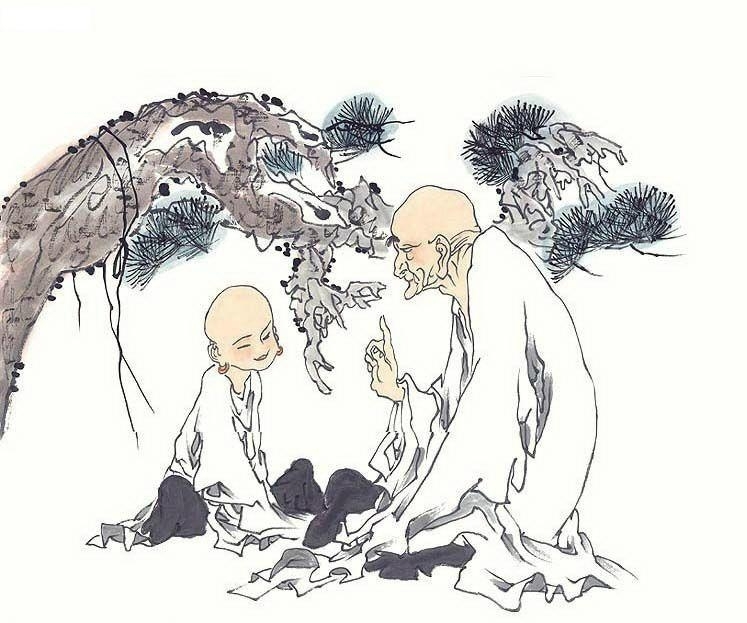
Why Practise Taijiquan(为什么练习太极拳)?
All Taijiquan exercises are performed softly. To use only those muscles required to perform a particular act and not to use other muscles is to be efficient. To relax is to conserve energy. In this way softness will promote greater efficiency. To be soft is to have efficient muscles, which promote muscle flexibility. Softness also alleviates anxiety and aids clear thinking by relaxing the mind. Adequate muscle tone and a well-balanced interplay of tension and release are usually associated with general well-being and emotional stability. From motion you obtain serenity and stability by the release of tension through the continuous shifting of weight from one foot to the other. Meditation, health and self-defence seem contradictory and incompatible, but nothing could be further from the truth. The practice of all three involves the training of both mind and body. Self-defence like meditation requires that one becomes aware of one’s body. The body must be conditioned to become flexible and strong. Taijiquan is both meditation and self-defence at the same time; the system is designed so that the two are inseparable. When you are practising one, you are practising the other. Qi is not quite life-force but it is an aspect of life-force. It is intrinsic energy, inner power, and a vital force that is inherent in all human beings. Once this vital force is released in the individual it is supposed to bring him robust health, strength and longevity. For all the Chinese ‘internal boxing’ schools the power that Qi brings is applied not only for meditation and enlightenment but also for health and self-defence. The principal technique for the development and cultivation of Qi in Taijiquan is in the practice of Taijiquan movements. Unless the movements are practised properly the cultivation of Qi is not possible. The combination of relaxation and proper breathing within the movements is the key to Qi.
About body,
tai chi martial art very seriously. Especially Young's tai chi is most known for. It includes two aspects: First my practice shenfa to be positive, most of the action to be on in the next three points [ie Baihui will Zhiyin the Yongquan] basically to keep the upper and lower vertical Jhongjheng not partial to form a gravity vertical line, the body can not bend forward and backward. . .
Such as the chest and back In Taijiquan shenfa, are very particular about this action, also a lot of misinformation. This action is demonstrated through 3D, for your reference.

To loosen chest uprooted spine 3D video 这个动作3D视频演示(汤鸿鑫制作):
Mr. Yan Hanxiu talk 杨振基(YANG ZHENJI) In 1985, the first lunar month , YANG Shou- Yeoh Chin Kee older brother 's death in Hong Kong . Soon , Yeoh Chin Kee go to Hong Kong to visit relatives, and three daughters to see the sister and big brother . Three nieces YANG Shou in tuning work hard and unusual. They see di-tert- come , very happy. Second child Marlee every day of Yeoh Chin Kee collar push her hand . Young people strong ambition to catch the the hand wanted hair Jin try . Yeoh Chin Kee push for a while with her , with both hands resting on Marlee arm , Marlee want to exert oneself , a loose or put her . Marlee said : " uncle, your fresh with my father ." During his stay in Hong Kong , Marlee with Yeoh Chin Kee push hands a lot . Yeoh Chin Kee to leave Hong Kong back to the mainland , Marlee said : " uncle, after you go home , no one pushed me hands down ." Marlee martial arts is the best of the three sisters .
【太极拳介绍Tai chi's brief introduction】
Tai Chi is a good exercise method for health. With its gentle strength, tai chi moves us closer to feeling more alive and gives us the ability to realize our greater human potential.
Practicing Tai Chi Chuan you should exercise both externally and internally, physically and mentally, trying to keep the balance and unity of outer and inner part of the body. By imitating the movements of masters in our teaching stuff, you will find that your emotion, which is used to be up and down, calms down and self-control becomes an easy thing. What is more you will become aware of the great benefit, that is relaxation, a thorough relaxation. It is a very practical way for you to refresh from tension and exhaustion.
Tai Chi, one of China's martial arts, a combination of ancient guide, qigong breathing technique and Chinese meridian theory, and the theory of yin and yang of ancient philosophical base to Taoism, Tai Chi, Bagua Taijiquan theory is integrated together. Tai Ji Quan (Tai Chi) is a major division of Chinese martial art.
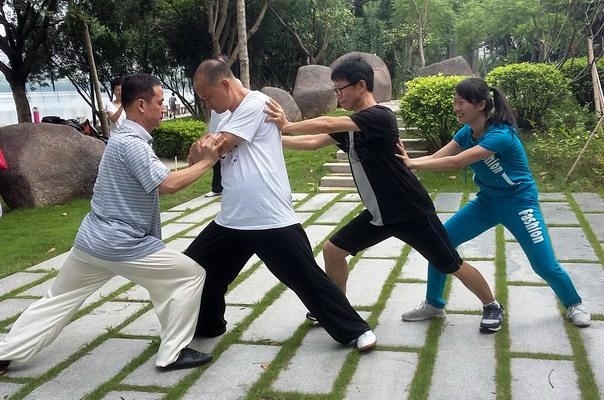
Zhang San Feng (张三丰 or 张三峰) was a legendary Chinese Taoist priest from Wudang (武当) monastery believed to have lived at least 200 years. He was said to be living in the Song dynasty, Yuan dynasty and Ming dynasty. His name is said to have been Zhang Junbao (張君寶) and he was a Shaolin monk before he became a Taoist monk. Zhang San Feng’s Taijiquan is known as Shi San Shi (十三式) or Thirteen Postures. All Taijiquan practiced today are said to come from this style. However, historical facts do not have evidence that Zhang San Feng was the originator of Taijiquan. There are also claims that there are actually two Zhang San Feng.
Wang Zong Yue (王宗岳) was a legendary figure in the history of taijiquan believed to be a famous student of Zhang San Feng. His Taijiquan Lun (太极拳论) or Taijiquan Theory, was frequently quoted as one of the classics in the study of Taijiquan. Wang's disciples, Jiang Fa (將發), went on to make important contributions to the development of modern Taijiquan by passing the matial art to Chen Wang Ting. However, the story is vague and the timeline do not support the story.
Whether Xu Xuan Ping, Zhang San Feng, Wang Zong Yue or Chen Wang Ting create Taijiquan, it is still under dispute. But the fact that must be accepted is that Chen Chang Xing (陈长兴, 1771-1853), the 14th generation Chen master, was the first to teach Chen Taijiquan to Yang Lu Chan (杨露禅, 1799-1872), an outsider to Chen family. Yang Lu Chan traveled to Beijing in 1860's and soon became famous for being an unbeatable master. Yang formulated his own Taijiquan form based on Chen Family Taijiquan and became the founder of Yang Taijiquan. This was the beginning of the spread of Taijiquan from family art of a small village in central China to an international phenomenon.
太极拳练法提要:
君初练拳,宜端正身姿以立根基,最忌心躁气浮,精神不振,眼不顾手,手不顾脚,此谓盲练。尤忌身形不活,手脚不随,即用猛力,处处夺气显力者,此痴练耳。倘能平心静气住目凝神,轻摇之以松其肩垂肘,柔随之以活其腰落胯,徐行之以稳其步,待至肩松身活步稳,然后镇头领气以卫其力,力顺则气自通,气通则力自重,所学之法如是练而习之,以期纯熟,则手眼步一致,心神气相同,自能臻自然而然之妙境矣。
If you're not doing anything silly, stupid, crazy, or embarrassing...you're not having any fun!
As I pass the park, I see some peoples doing tai chi.
太极拳四大功能 :
太极养生、太极技击、太极点穴、太极卸骨。 古时候太极拳是武术主要用来技击,而发现了养生;如今太极拳用来养生,而兴趣落于技击。太极隐秘功夫太极点穴术已经很少人能系统掌握了,杨式太极点穴法共有二十四种手法,七十二个变化,分为点、打、拿三种形式,点穴时多用指,打穴时多用掌、肘,拿则包含了掐筋、拿脉、截经等。至于太极卸骨术更是鲜为人知。太极卸骨之法乃是武林中一大绝技,究其手法,有捏、卸、推、揉,等法。
Over there, a man performed the slow - motion dance of tai chi.
Electives are offered in Tai Chi and advanced Tai Chi exercise.
太极箴言:
内气贯通会阴就是开胯,内气贯通命门就是塌腰,内气贯通任脉就是空胸或涵胸,内气贯通丹田就是实腹,内气贯通大椎就是拨背,内气贯通手臂就是沉肩坠肘,内气贯通涌泉就是根劲,内气贯通百会就是虚灵顶劲,内气贯通周身就是掤劲。
Yang's Taichi Club is a volunteer based, community oriented, and non-profit organisation, set up in 2012 in Xiamen, FJ, China, teaching standard traditional Taichi martial arts for health, entertainment, performance and tournament. All membership fees and contributions are used only for venue rental, marketing and club’s operation. With harmonious melody and graceful movement, Tai Chi lovers can enjoy Taichi as a moving meditation to get the peaceful feeling and release daily pressures in work and life.
杨氏太极拳友会是基于志愿者和面向社区的非营利机构,2012年成立于中国厦门,常年教授传统太极拳,组织健身、娱乐、表演、竞赛等活动。所收会员费仅用于场地租赁、宣传推广和俱乐部的日常运作。在和谐的旋律和优雅的运动中,太极拳爱好者可以尽情享受梦幻一般的太极所带来的宁静和日常工作生活减压功效。
太极拳术语英文名
1. 粘Sticking
2. 黏 adhering
3. 连 uninterupted
4. 随 following
5. 两人搭手 相互缠绕 Two people give hands and twine each other
6. 松活弹抖 relaxing, flexible, flicking and tramble
7. 抓 拿 摔 踢 打 seize, trap, fall, kick and hit
8. 朋 ward off / push 捋 stroke/pull 挤 squeeze 按 press 採 pick 挒 twist 肘 elbow 靠 relaying
9. 前 forward 后 backward 左 left 右 right 上 up 下 down
10. 向前 go forward 向后 go backward 向左 move to the left 向右 move to the right 转 turn
11. 松垮转腰 relax your hips and turn your waist
12. 气沉丹田 lower your internal energy to your lower abdomen
13. 两眼平视 eyes look forward
14. 脚尖外摆 moving your toe anti-clockwisely
15. 脚尖里扣 moving your toe clockwisely
16. 两手上 朋 moving your palms to ward off
17. 手心 palm
18. 拳 fist
19. 掌 palm
20. 五指 thumb and fingers
21. 屈膝松垮 bend your knees and relax your hips
22. 头上领 to naturally erect your head
23. 立身中正 keep your body upright /
24. 含胸塌腰 keep your chest and chin in and lower your waist
25. 练柔成钢 to gradually become strong through practice softly
26. 发劲 release your energy
27. 沉肩坠肘 lower your shoulders and elbow
28. 胸气下降 lower the internal energy in your chest
29. 起式 preparing form
30. 收式 closing form
TaiChi
Tai Ji Quan is a major division of Chinese martial art. Tai Ji Quan means "supreme ultimate fist". Tai means "Supreme", Ji means "Ultimate", and Quan means "Fist".
There have been different sayings about the origin of Tai Ji Quan. The traditional legend goes that the wise man Zhang Sanfeng of the Song Dynasty (960-1279) created Tai Ji Quan after he had witnessed a fight between a sparrow and a snake; while most people agreed that the modern Tai Ji Quan originated from Chen style Tai Ji Quan, which first appeared during the 19th century in the Daoguang Reign of the Qing Dynasty (1644-1911).
Tai Ji Quan has its philosophical roots in Taoism and is considered as an internal martial art, utilizing the internal energy, or Qi, and following the simple principle of "subduing the vigorous by the soft". Taoism is the oldest philosophy of China which is represented by the famous symbol of the Yin and Yang which expresses the continuous flow of Qi in a circular motion that generates two opposite forces, plus and minus, which interact and balance with each others to bring existence to the physical and metaphysical world.
The most famous forms of Tai Ji Quan practiced today are the Chen, Yang, Wu, Wu and Sun styles. All the five styles can be traced back to Chen style Tai Ji Quan. According to historical records .Based on the Chen style and created by Yang Luchan, a Hebei native of the Qing Dynasty, the Yang style is now the most popular style worldwide. The Woo Style is based on the Chen and Yang styles and created by Woo Yuxing.
The Sun style is derived from Chen and Woo styles and created by Sun Lutang. The Sun style is a combination of the more famous internal Chinese martial art forms of Ba Gua, Xing Yi and Tai Ji. The Wu style is based on Chen and Yang styles, and it was created by Wu Jianquan.
Nowadays, when most people talk about Tai Ji Quan, they are usually referring to the Yang style, which has already spread throughout the world and is practiced by millions of people.
太极拳,中国拳术之一,早期曾称为“长拳”、“棉拳”、“十三势”、“软手”。至清朝乾隆年间(公元1736~1796年),山西人王宗岳著《太极拳论》,才确定了太极拳的名称。“太极”一词源出《周易·系词》,含有至高、至极、绝对、唯一的意思。
关于太极拳的起源,众说纷纭,大致有唐朝(公元618~907年)许宣平、宋朝(公元960~1278年)张三峰、明朝(公元1368~1644年)张三丰、清朝(公元1644~1911年)陈王廷和王宗岳等几种不同的说法。但现在多数拳家亦以现传各式太极拳俊源出陈式太极拳之说为本。
太极拳综合吸收了明代名家拳法,特别是戚继光的三十二式长拳,并结合了古代导引、吐纳气功之术和中医经络学说,以及古代阴阳五行学说,以道教、太极八卦等理论为太极拳的哲学基础,综合而成。
太极拳以“棚、捋、挤、按、瘛 、肘、靠、进、退、顾、盼、定”等为基本方法。动作徐缓舒畅,要求练拳时正腰、收颚、直背、垂间,有飘然腾云之意境。清代拳师称“拳如大海,滔滔而不绝”。同时,太极拳还很重视练气,所谓“气”,就是修炼人体自身的精神力,这是太极拳作为内家功夫的特点之一。
目前,太极拳主要有陈式、杨式、孙式、吴式、武式等流派。明末清初,河北永年人杨露禅从学陈长兴,并与其子杨健侯、其孙杨澄甫等人在陈式太极拳的基础上,创编发展了“杨式太极拳”。清末河北永年人武禹襄在杨露禅从陈家沟返乡后,深爱其术,从学杨于陈式老架太极拳,后又从陈清平学赵堡架,经过修改,创造了“武式太极拳”。河北完县人孙禄堂,从师李魁垣学形意拳,继而学于李魁垣的师傅郭云深,又从师于程廷华学八卦掌。后又从师郝为真学太极拳,之后参合八卦、形意、太极三家拳术的精义,融合一体而创“孙式太极拳”。
Click Here Edit Paragraph Content
|
|
|
|
|
|
|
|